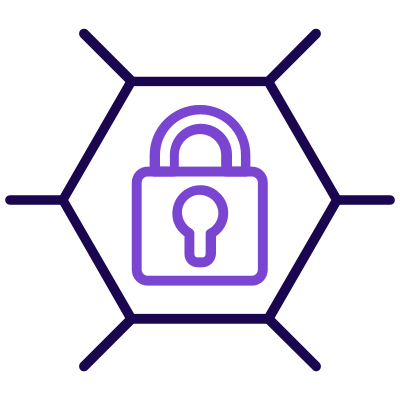Complexity is the enemy of cybersecurity for small business. The simpler things are, the more control you will have. It will be better understood by employees which improve the likelihood of it being adopted and embraced and it will be easier to track, repeat and justify.
Cybersecurity is about the principles of access control (AC), confidentiality, integrity, availability (CIA) and not about the technology tools. Just spending more on tools will not make your business more secure. Your security is rather determined by implementing the right controls, balancing simplicity with the effectiveness of these controls, and layering your defenses.
Layering security defenses help prevent unauthorised breaches and there are many ways to do this. Not exposing systems and data unnecessarily and limiting access to those who need it, is a good start.
While no security layer is unbreakable, the combination of layers strengthens your defense and minimises the likelihood of a security breach.
Seven steps to mitigate small business cyber threats
All of these steps should be implemented to mitigate security breach risks. Otherwise, it is like servicing your vehicle without changing the oil. Skipping the oil change will result in your vehicle back in the workshop in no time.
1. Education must be a priority
An educated workforce has to be a top priority because the truth is that many cyberattacks target business where it is most vulnerable: the employees. Therefore, educating staff on the type of threats and how to deal with them must take centre stage on your cybersecurity awareness plan.
Each security incident should be an opportunity to educate, test and reinforce details on what the business is protecting and why it’s important to behave in a certain way.
Once staff understands what the business is trying to protect, and buy into the importance of following secure behaviours, they become accountable and actively participate in creating a secure environment.
(The National Institute for Cybersecurity Training (NIST) provides good content for security awareness training and activities.)
2. Backup data and restore quickly
Having your data backed up and restored effectively is the foundation of cybersecurity. Data that cannot be restored to its original state is useless, so you need to consistently back up and check the reliability of the data once restored.
Backup systems can be automated with a minimal time investment required. In fact, this process can take only 15 minutes a month. Checking that your data can be fully restored using only three hours a year, is the best security investment you can make.
3. Defend with multifactor authentication
Every small business should be using Multifactor Authentication (MA) as the first line of defense because it is difficult for cyber attackers to get around. Multifactor authentication is simple and available on most cloud platforms at no or a low cost.
4. Encrypt remote access to your network
Protecting and encrypting remote access on your internal network is a critical layer of cybersecurity because employees and third parties can log into your system remotely using their phones or other devices.
Using VPN encryption or SSL/TLS level security to protect access to your network, adds a layer of assurance as employees and third parties may not have adequate security from their end.
5. Rule of least privilege
This is a simple step to implement, yet many small businesses are not vigilant about who gets access to what. Your people should only access what they need for their role and level. Also, when roles change, access should be reviewed using this principle.
Systems should be treated like people; they should also only have access that is essential for their function. If a computer or device that does not need access to a server, then don’t give it access.
For example, mobile or IoT devices such as kettles or fridges should not be on the same network as your file server containing your critical business data. Such devices should be on a separate network so that if compromised, cybercriminals can’t use them to gain access to your confidential files.
Therefore, by using the rule of least privilege your business will be more secure.
6. Reduce the attack surface area
Not everything has to be online, that is on the cloud or on a computer connected to the internal network. Something that cannot be accessed is essentially an impenetrable vault; hackers can’t attack something that they can’t reach.
7. Patch management is a must
Software is being updated all the time to address any security vulnerabilities as well as providing new features. Regularly check for software updates to make sure you are on the latest, stable and tested version.
Remember that patching does not only apply to operating systems and applications but also to the firmware for all devices such as routers, firewalls, printers.
While there is some automation in patch management, this is not a step you can leave to vendors to control. It requires hands-on diligence and because hackers know it is the one area that is often neglected by small business, they easily exploit this space.
If you follow these cybersecurity steps for small business, bearing in mind the principles of simplicity, access control (AC), confidentiality, integrity, availability (CIA) and layering, you will be able to build a more secure and resilient company.
Need cybersecurity consulting?
According to research from IBM and the Ponemon Institute released in 2020, a whopping two out of five companies in the U.S and the United Kingdom with 50 or fewer employees do not have any type of cybersecurity defense plan in place.
If you faced a data breach today, would you be ready?
If in doubt, a specialist cybersecurity consultant can provide unique insight with a comprehensive security gap analysis followed by a tailored roadmap for a more secure and legally compliant business
At ENHALO we partner with you to keep the bad guys out so your business can keep the good times going.







